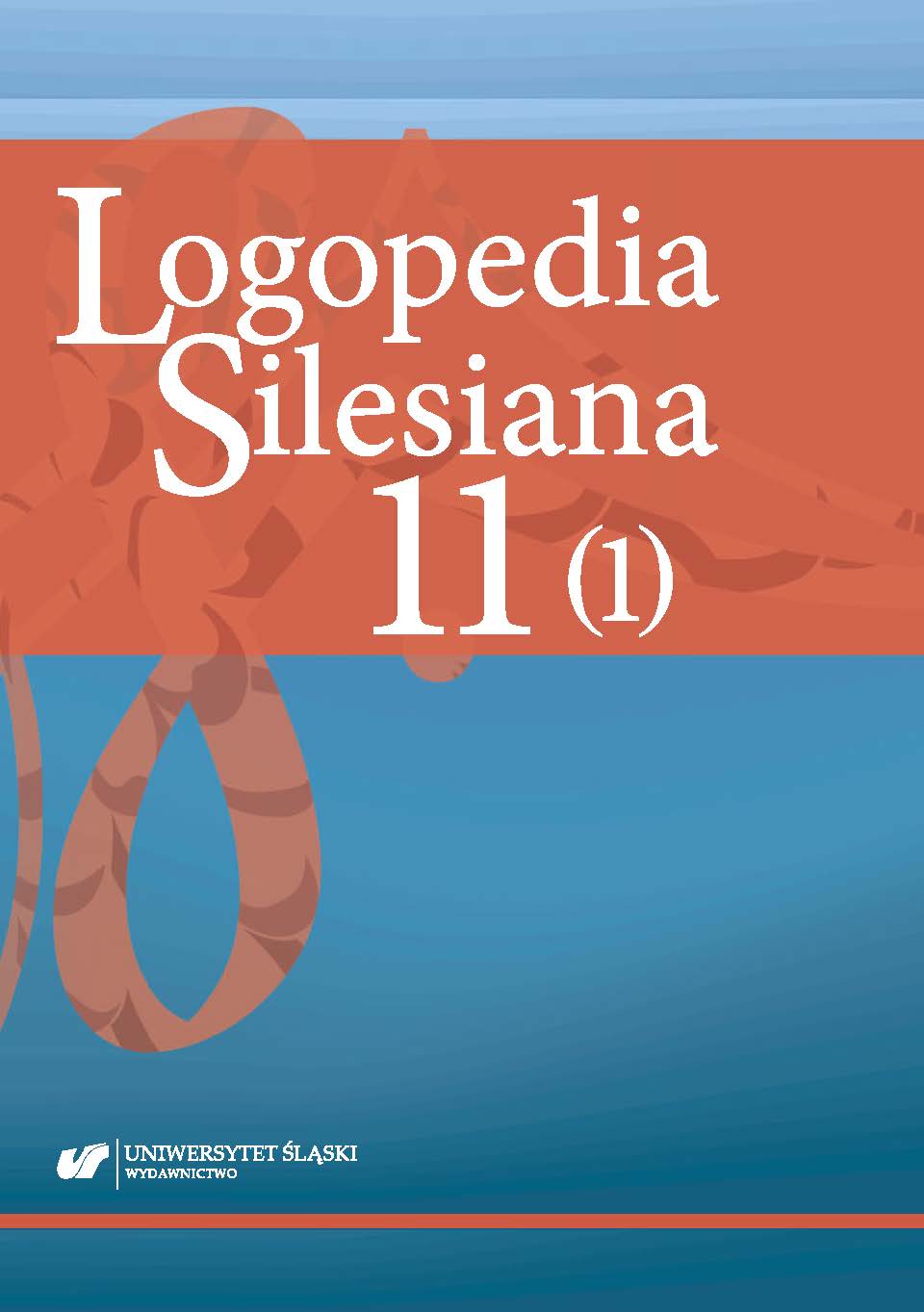Bahr, D. (2010). Nobody ever told me (or my mother) that! USA: Sensory World.
Google Scholar
Barczok, M. (2018). Zdravé plíce: Jak se zbavit dýchacích potíží, astmatu, alergií a chrápání. Praha: Euromedia Group.
Google Scholar
Baxter, R. (Eds.). (2018). Tongue-tied. Alabama: Alabama Tongue-Tie Center.
Google Scholar
Carter, K. (2020). Oral myofunctional disorders. Speakeasy Therapy Services. https://www.speakeasytherapylv.org/oral-myology/ [access: 23.10.2021].
Google Scholar
Červinková, K. (2022). Povědomí logopedů a spánkových center o možnosti využití myofunkční terapie jako terapie obstrukční spánkové apnoe v ČR. Olomouc. https://theses.cz/id/0e4zmv/. Diploma thesis. Univerzita Palackého v Olomouci, Pedagogická fakulta. Thesis supervisor: Mgr. Bc. Jana Mironova Tabachová.
Google Scholar
Chuang, L., et al. (2019). Changes in craniofacial and airway morphology as well as quality of life after passive myofunctional therapy in children with obstructive sleep apnea: a comparative cohort study. Sleep and Breathing, 23(4), 1359–1369. https://doi.org/10.1007/s11325-019-01929-w.
Google Scholar
Diaféria, G., et al. (2017). Myofunctional therapy improves adherence to continuous positive airway pressure treatment. Sleep and Breatching, 21(2), 387–395. https://doi.org/10.1007/s11325-016-1429-6.
Google Scholar
Drager, L. F., et al. (2005). Early signs of atherosclerosis in obstructive sleep apnea. American Journal of Respiratory and Critical Care Medicine, 172(5), 613–618. https://doi.org/10.1164/rccm.200503-340OC.
Google Scholar
Fisher-Voolsholz, M., & Spenthof, U. (2002). Orofaziele Muskulfunktions-störungen. Berlin: Springer-Verlag.
Google Scholar
Foldvary-Schaffer, N. (2019). Obstructive sleep apnea: A wake-up call for better outcomes. Cleveland Clinic Journal of Medicine, 86(9 suppl 1) 1. https://doi.org/10.3949/ccjm.86.s1.01.
Google Scholar
Genta, P. R., et al. (2017). Airflow shape is associated with the pharyngeal structure causing OSA. Chest, 152(3), 537–546.https://doi.org/10.1016/j.chest.2017.06.017.
Google Scholar
Guimaraes, K. C., Drager, L. F., Genta, P. R., Marcodes, B. F. & Lorenzi-Filho, G. (2009).
Google Scholar
Effects of oropharyngeal exercises on patients with moderate obstructive sleep apnea syndrome. American Journal of Respiratory and Critical Care Medicine, 179(10), 962–966. https://doi.org/10.1164/rccm.200806-981OC.
Google Scholar
Hirata, R. P., et al. (2016). Upper airway collapsibility assessed by negative expiratory pressure while awake is associated with upper airway anatomy. Journal of Clinical Sleep Medicine, 12(10), 1339–1346. https://doi.org/10.5664/jcsm.6184.
Google Scholar
Hobzová, M. (2011). Spánková medicína v pneumologii: Obstrukční spánková apnoe. Postgraduální medicína, 13, 666–672.
Google Scholar
Hobzová, M. (2016). Zástavy dechu ve spánku: Diagnostika a možnosti léčby. Olomouc: SOLEN.
Google Scholar
Jordan, A. S., McSharry, D. G., & Malhotra, A. (2014). Adult obstructive sleep apnoea. Lancet, 383(9918), 736–747. https://doi.org/10.1016/S0140-6736(13)60734-5.
Google Scholar
Kahn, S., & Ehrlich, P. R. (2018). Jaws: The story of a hidden epidemic. USA: Standford University Press.
Google Scholar
Katz, E. S., & D’Ambrosio, C. M. (2008). Pathophysiology of pediatric obstructive sleep apnea. Proceedings of the American Thoracic Society, 5(2), 253–262. https://doi.org/10.1513/pats.200707-111MG.
Google Scholar
Kittel, A. (2014). Myofunktionelle Therapie. 11. Idstein: Schulz-Kirchner.
Google Scholar
Koka, V., et al. (2021). Orofacial myofunctional therapy in obstructive sleep apnea syndrome: a pathophysiological perspective. Medicina, 57(4), 323. https://doi.org/10.3390/medicina57040323.
Google Scholar
Lee, Y., Huang, Y., Chen, I., Lin, P., & Chuang, L. (2020). Cranifacial, dental arch morphology, and characteristics in preschool children with mild obstructive sleep apnea. Journal of Dentistry Sciences, 15(2), 193–199. https://doi.org/10.1016/j.jds.2019.09.005.
Google Scholar
Marcus, C. L. (2001). Sleep-disordered breathing in children. American Journal of Respiratory and Critical Care Medicine, 164(1), 16–30. https://doi.org/10.1164/ajrccm.164.1.2008171.
Google Scholar
Marcus, C. L., et al. (2012). Diagnosis and management of childhood obstructive sleep apnea syndrome. Pediatrics, 130(3), 714–755. https://doi.org/10.1542/peds.2012-1672.
Google Scholar
Marcus, C., L., et al. (2013). A randomized trial of adenotonsillectomy for childhood sleep apnea. The New England Journal of Medicine: Research and Review, 368(25), 2366–2376. https://doi.org/10.1056/NEJMoa1215881.
Google Scholar
McSharry, D. G., et al. (2014). Physiological mechanism of upper airway hypotonia during REM sleep. Sleep, 37(3), 561–569. https://doi.org/10.5665/sleep.3498.
Google Scholar
Memon, J., & Manganaro, S. N. (2020). Obstructive sleep-disordered breathing. Treasuer Island: StatPearls Publishing. https://www.ncbi.nlm.nih.gov/books/NBK441909/ [access: 23.10.2021].
Google Scholar
Neumannová, K., Hobzová, M., Sova, M., & Prasko, J. (2018). Pulmonary rehabilitation and oropharyngeal exercises as an adjunct therapy in obstructive sleep apnea: a randomized controlled trial. Journal of Sleep Medicine, 52, 92–97. https://doi.org/10.1016/j.sleep.2018.03.022.
Google Scholar
Oh, J. S., et al. (2021). Determinants of sleep-disordered breathing during the mixed dentition: development of a Functional Airway Evaluation Screening Tool (FAIREST-6). Pediatric Dentistry Journal, 43(4), 262–272.
Google Scholar
Osman, A. M., Carter, S. G., Carberry, J. C., & Eckert, D. J. (2018). Obstructive sleep apnea: current perspectives. Nature and Science of Sleep, 10, 21–34. https://doi.org/10.2147/NSS.S124657.
Google Scholar
Peppard, P. E., et al. (2013). Increase prevalence of sleep-disordered breathing in adults. American Journal of Epidemiology, 177(9), 1006–1014. https://doi.org/10.1093/aje/kws342.
Google Scholar
Romero, E., Krakow, B., Haynes, P., & Ulibarri, V. (2010). Nocturia and snoring: predictive symptoms for obstructive sleep apnea. Sleep and Breathing, 14(4), 337–343. https://doi.org/10.1007/s11325-009-0310-2.
Google Scholar
Saccomanno, S., & Paskay, L. C. (2020). New trends in myofunctional therapy. Milano: EdiErmes.
Google Scholar
Sateia, M. J. (2014). International classification of sleep disorders – third edition: highlights and modifications. Chest, 146(5), 1387–1394. https://doi.org/10.1378/chest.14-0970.
Google Scholar
Sedlák, V., Koblížek, V., Lánský, M., Šimek, R., & Smolík, P. (2006). Léčba syndromu obstrukční spánkové apnoe. Medicína pro praxi, 3, 124–128.
Google Scholar
Slouka, D. (2016). Obstrukční spánková apnoe. Plzeň: Euroverlag.
Google Scholar
Šonka, K. (2004). Apnoe a další poruchy spánku. Praha: Grada.
Google Scholar
Šonka, K., & Slonková, J. (2008). Spánková apnoe dospělého věku. Česká a slovenská neurologie a neurochirurgie, 6, 634–656.
Google Scholar
TalkTools (2021). What is Myo? TalkTools. https://talktools.com/pages/omt-orofacial-myofunctionaltherapy101 [access: 21.10.2021].
Google Scholar
Verma, R. K., et al. (2016). Oropharyngeal exercises in the treatment of obstructive sleep apnoea: our experience. Sleep and Breathing, 20(4), 1193–1201. https://doi.org/10.1007/s11325-016-1332-1.
Google Scholar
Villa, M. P., Evangelisti, M., Matella, S., Barreto, M., & Pozzo, M. D. (2017). Can myofunctional therapy increase tongue tone and reduce symptoms in children with sleep-disordered breathing? Sleep and Breathing, 21(4), 1025–1032. https://doi.org/10.1007/s11325-017-1489-2.
Google Scholar
Villa, M. P., et al. (2015). Rapid maxillary expansion outcomes in treatment of obstructive sleep apnea in children. Journal of Sleep Medicine, 16(6), 709–716. https://doi.org/10.1016/j.sleep.2014.11.019
Google Scholar


 https://doi.org/10.31261/LOGOPEDIASILESIANA.2022.11.01.06
https://doi.org/10.31261/LOGOPEDIASILESIANA.2022.11.01.06

 10.31261/LOGOPEDIASILESIANA
10.31261/LOGOPEDIASILESIANA